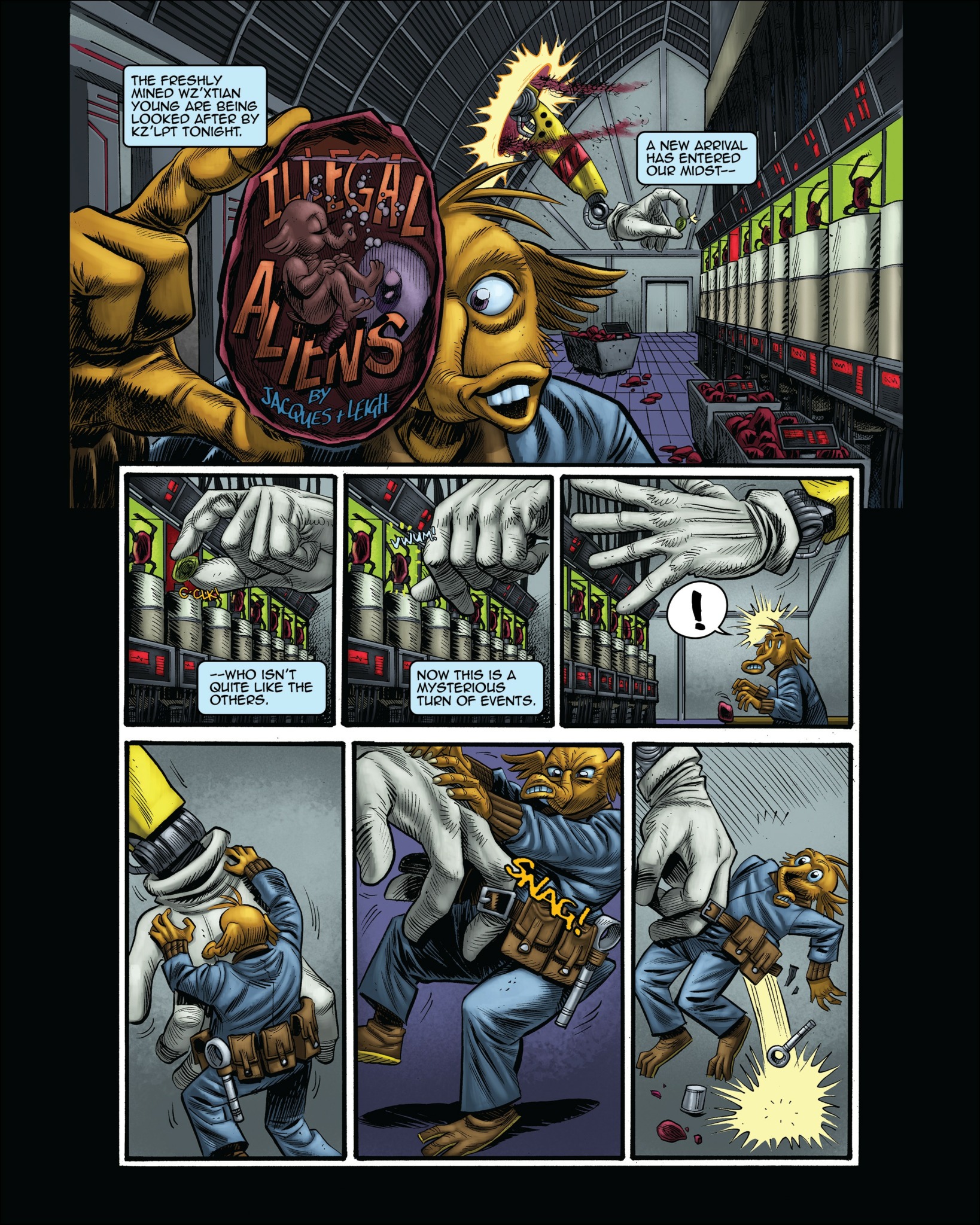Alright – so today we’ve got the honor of introducing you to Leigh Walls. We think you’ll enjoy our conversation, we’ve shared it below.
Leigh, looking forward to hearing all of your stories today. Learning the craft is often a unique journey from every creative – we’d love to hear about your journey and if knowing what you know now, you would have done anything differently to speed up the learning process.
I started drawing comics from a very early age. I was always drawing. Mostly stuff from my head and my own characters and I would fill up sketchbooks with these characters and stories.
In high school I started drawing from live models at the suggestion of my father and brother. Drawing from life is the basis for learning how to draw. Anything you need to know how to draw, nothing is better than getting a look at it in real life.
Once I got the drawing down, I had to strengthen my knowledge and ability to tell stories visually. Some folks can do it looking at comics or mimicking what they see in comic books and graphic novels. I went to art school, the School of Visual Arts in Manhattan. I took classes taught by Klaus Janson and the late Joe Orlando. They taught me things I still use to this day, consciously making decisions on the page that conveys the information needed to make sure that your story is being understood even without the use of words. The art is there to make sure the reader doesn’t realize it’s just information transference.
What obstacles stand in the way of learning more? I like to think I’m always learning more while making comics, but I guess the biggest obstacle is one for most of us–time and money.

Awesome – so before we get into the rest of our questions, can you briefly introduce yourself to our readers.
My name is Leigh Walls. I’m a comic book creator and sometimes illustrator. I have done work on several anthologies including Memoirs of the Mysterious volumes 1 and 2, New Frontiers: The Many Worlds of George Takei and issues 1 and 2 of Trey.
I am generally a visual artists, lines and color, for comic books. There are times when I help with script writing, lettering and design, but mostly I just do the panel art.
What I like to do for my clients and I think I am in the minority of comic artists that do this is give them the art that will be printed–lines and lettering and color, if they want it. I think it helps to have a complete image and having the lettering done as well makes it one less thing for the client to worry about. Not to mention, as the artist, having the lettering in place leaves one less hand in the mix to change what was originally intended.
On somewhat rare occasions, I also set up the comps for press. I layout the whole comic book as it would be seen in print or digital publication. I especially like this step. It feels like when you’re wrapping presents for Christmas or something. It means the book is almost done. It’s very exciting.

What can society do to ensure an environment that’s helpful to artists and creatives?
My fantasy has always been to find a way to separate art from commerce.
To be absolutely clear, there can be use of art in commerce, design, sculpture in use of toys and the fabrication of tools and vehicles, architecture and engineering with the construction of buildings, bridges and infrastructure, but in terms of self-expression, I feel the interruption of capital and the need for survival really gets in the way of art and artistic pursuits.
It’s like the current adoption of the term “content.” Art is nothing but a product to be sold, and artists, whether visual, performance, or audio, find themselves having to spend their creative time making tons and tons of safe crap. Things made to be bought and/or consumed. I think it really behoove society to allow for art to exist outside of a financial framework. I mean, I think life as a whole should exist outside of a financial framework, but that’s a different conversation.

Can you share your view on NFTs? (Note: this is for education/entertainment purposes only, readers should not construe this as advice)
This kinda goes hand in hand with my belief in art being separate from commerce. When NFTs became popular, I think it was after Beeple’s multi-million dollar sale of an image of his 10-year long art project, I thought it was a neat use of tech to archive what I thought was a super ambitious art series. It was cool. What came next was problematic, a speculator market. I went through that with comic books in the 90s and I feel like folks never really learned..
Art being so close to big money creates this influx of people trying to make a bunch of STUFF quickly and for as cheap as possible. That was what happened with NFTs. A bunch of people saw someone get rich and wanted in on the racket. Leading folks to forget about the art and just about the payoff. The art becomes secondary.
I don’t like NFTs.
Contact Info:
- Website: https://www.leighwalls.com/
- Instagram: https://www.instagram.com/leighpwalls/?igsh=ZWQxbzAwNXk2ZjZq#
- Facebook: https://www.facebook.com/share/1BJkCEcfdB/
- Twitter: https://x.com/ComicsbyLeigh?t=oM0_OcSKpfkYWWd-uKaJcw&s=09
- Youtube: https://youtube.com/@comicsbyleigh?si=tNEnW5kN79_1FRcu




Image Credits
slide 6 – PITCH BLACK-written by Jacques Nyemb, Art by Leigh Walls
slide 7- Illegal Aliens-written by Jacques Nyemb, Art by Leigh Walls


